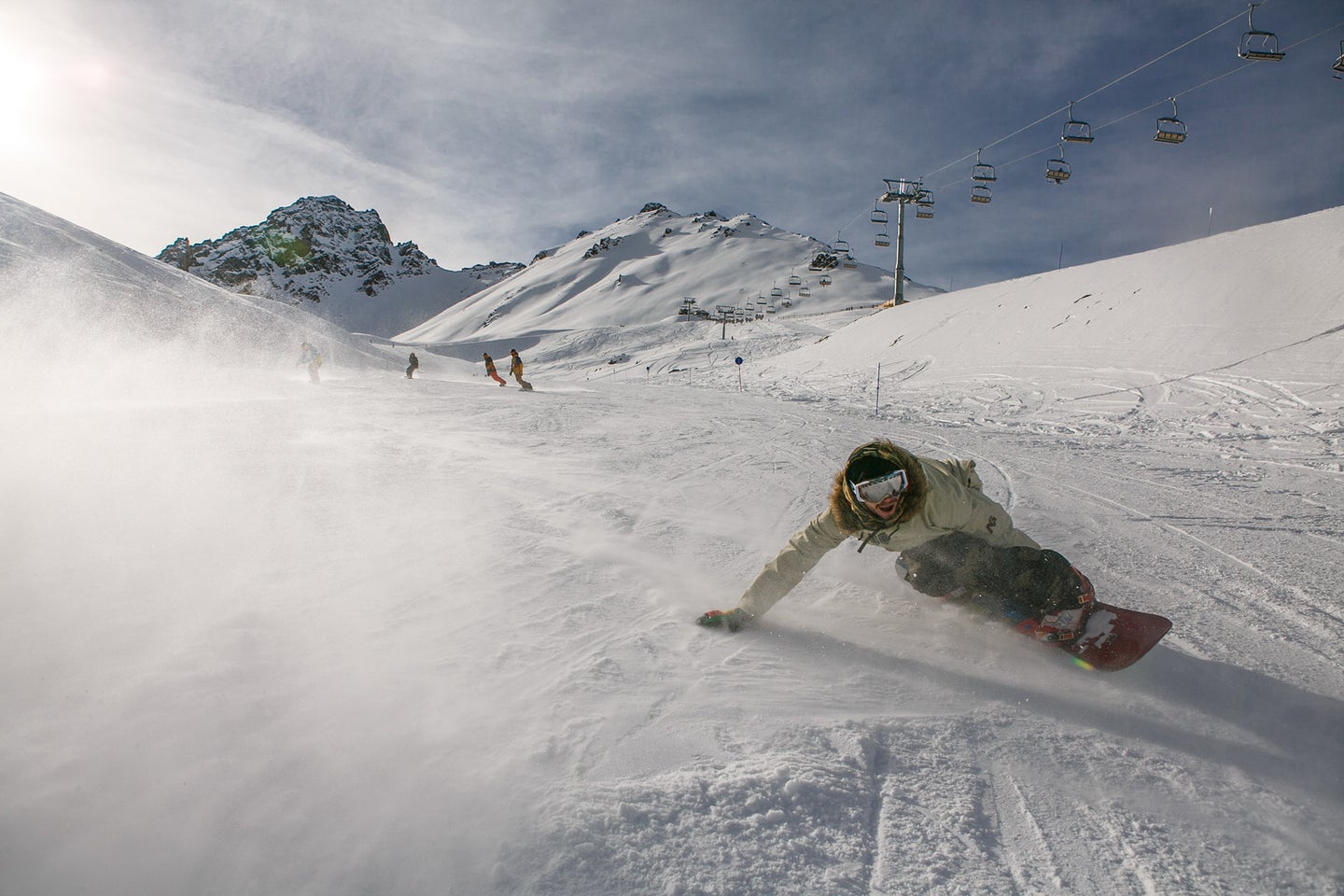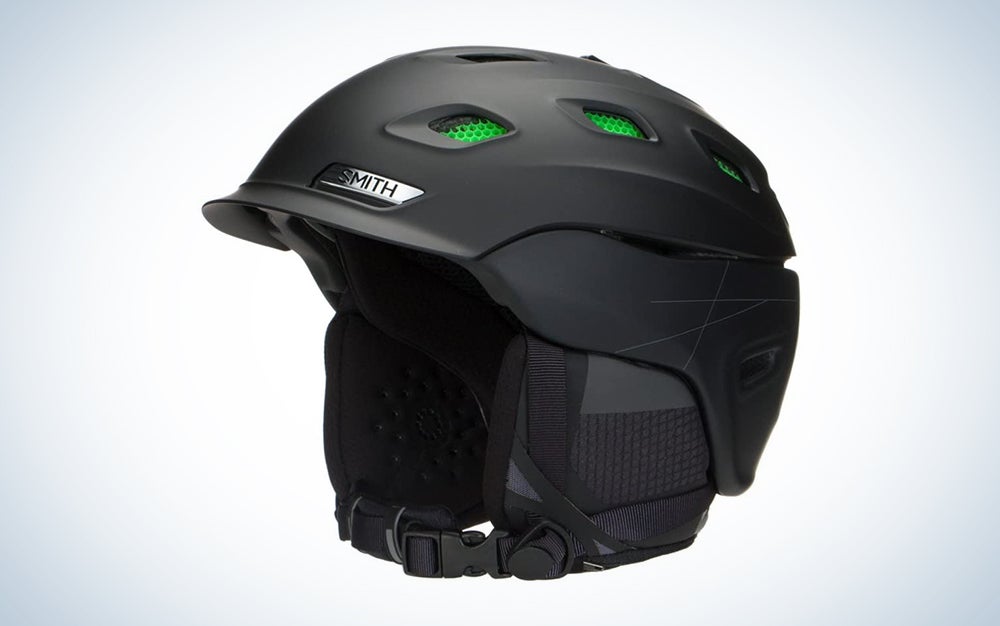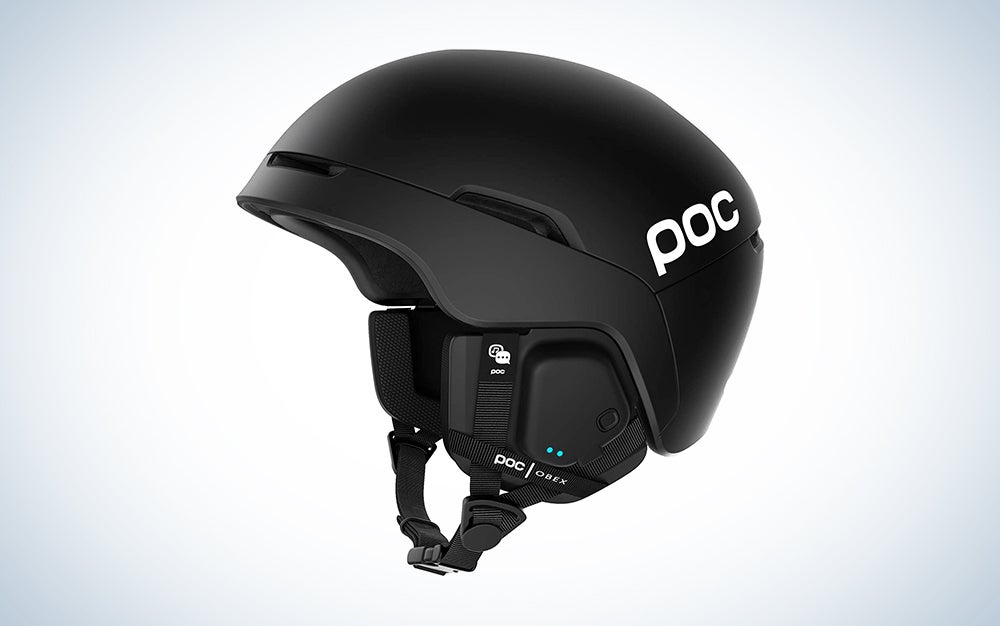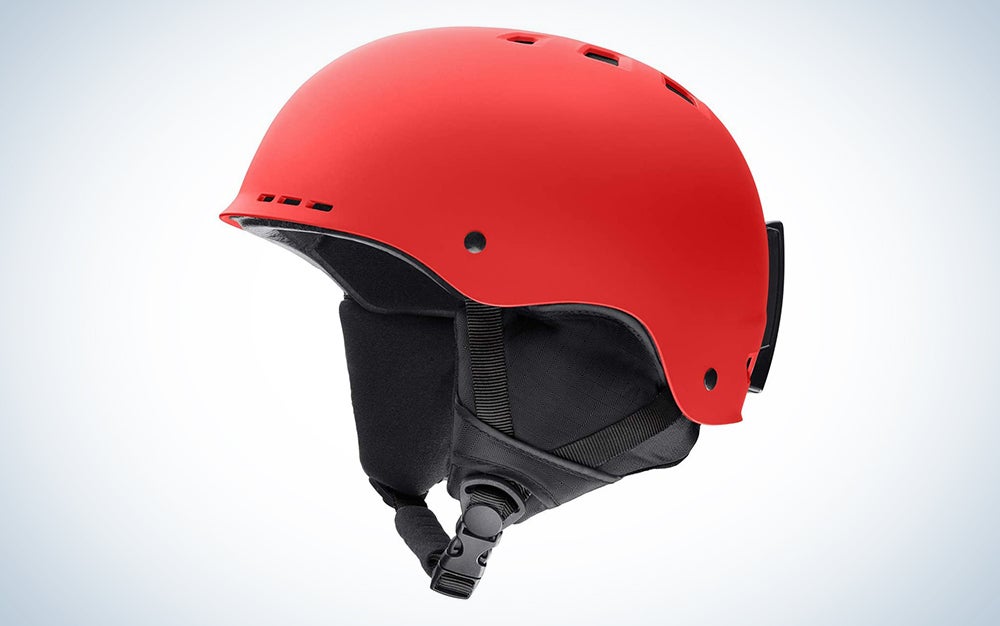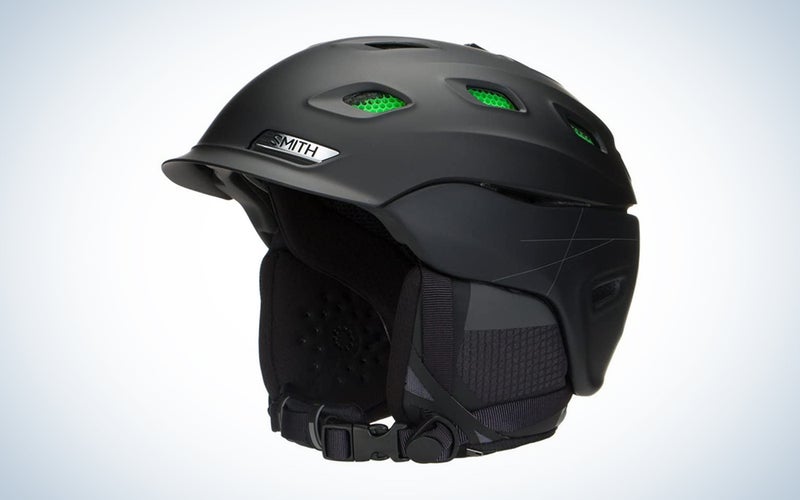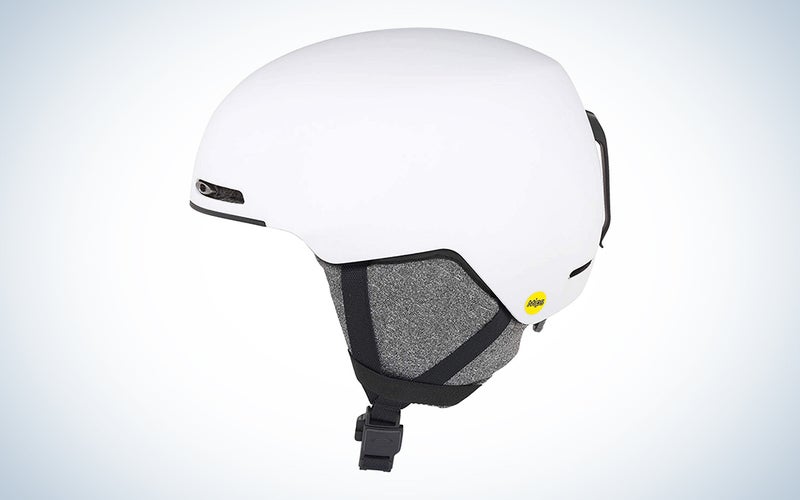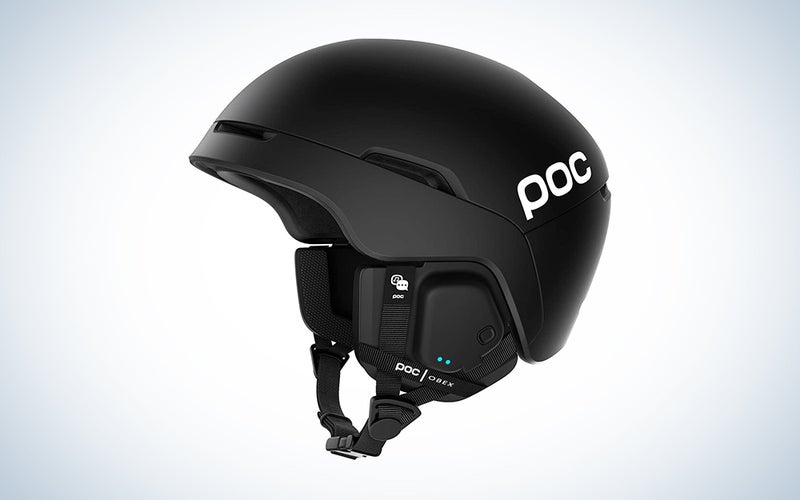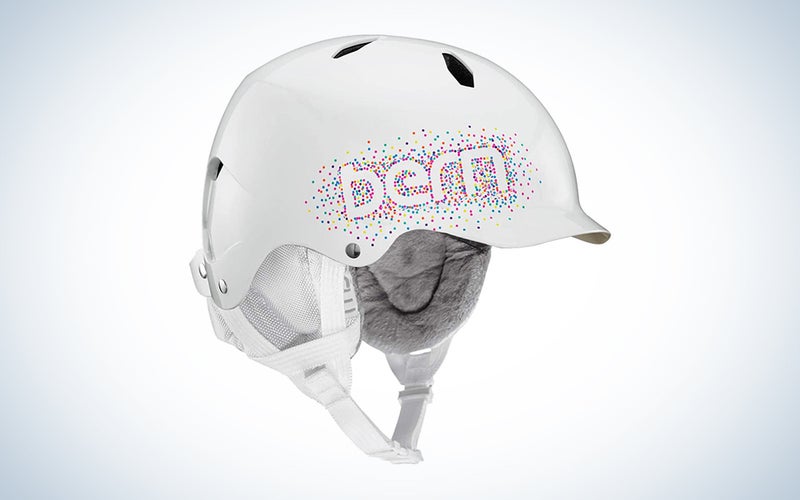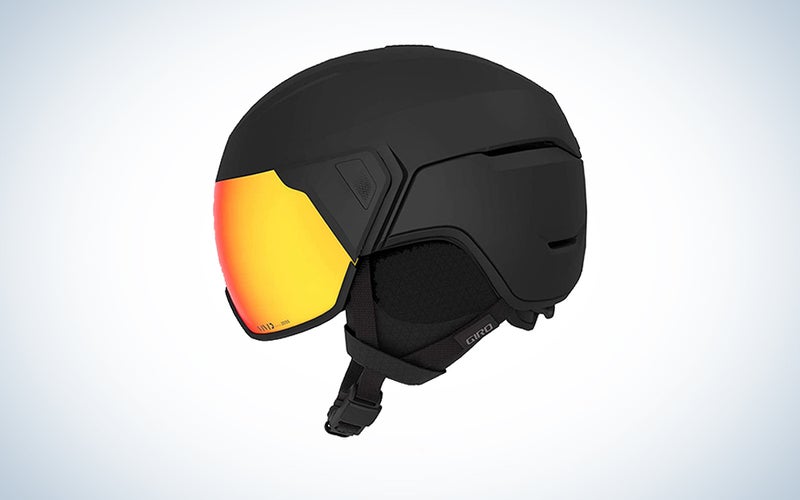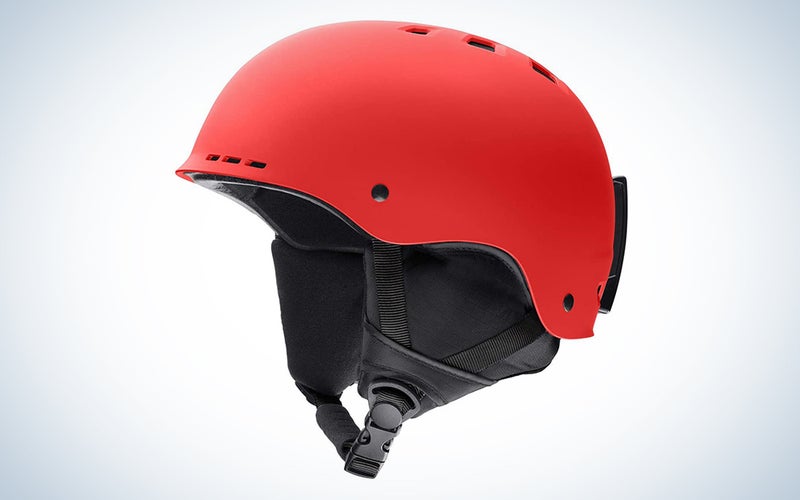We may earn revenue from the products available on this page and participate in affiliate programs. Learn more ›
Before you get to shredding the slopes, you have to make sure you’ve got the best snowboard helmet as part of your snow gear. Snowboarding, like skiing, requires an investment in selecting the right gear. Some gear can be rented but others are better to purchase and bring with you—for example, items that really need to have a personal fit, like snowboard helmets and goggles. Whether you are a beginner or advanced snowboarder, helmets are an essential piece of snowboarding gear and should offer optimal fit, comfort, hygiene, and protection for full, fun, safe days on the slopes.
The best snowboard helmet will fit snugly, fasten with a secure chin strap, and protect you from the cold while allowing for venting and moisture-wicking for added comfort. For safety, your helmet should be certified by the ASTM, and should coordinate and fit seamlessly with your goggles. While there is no actual difference between skiing and snowboarding helmets in terms of practical protection, snowboarders are big on style, and this carries through to snowboard helmets. Ranging in price from around $50 to $350, the market is full of selections for your budget. While some helmets are specifically designed for men, women, or children, many are made to be unisex—and every helmet is made to keep you safe, regardless of who is wearing it.
- Best overall: Smith Optics Unisex Adult
- Best for women: Oakley Women Mod1 MIPS
- Best smart: POC Obex Spin
- Best for kids: Bern, Kids Winter Bandito Snow Helmet
- Best with visor: Giro Orbit MIPS Spherical Snow Helmet
- Best budget: Smith Optics Holt
The best snowboard helmets: Reviews & Recommendations
Best overall: Smith Optics Unisex Adult
Smith
This is a classic, well-rated unisex snowboard helmet from a leading snowsport industry manufacturer. It features a hybrid SL shell with Aerocore open cell construction to both protect and ventilate. Additional flexibility and comfort come from the adjustable Boa FS360 fit system.
Best for women: Oakley Women Mod1 MIPS
Oakley
This women’s snowboard helmet offers a comfortable ventilated design with removable ear pads and liner. A fidlock style buckle uses magnets to fasten the helmet strap quickly even while wearing gloves. It’s fully rated for safety, and durability.
Best smart: POC, Obex Spin
POC
This is a bluetooth snowboard helmet for tech-minded snow sport enthusiasts. Layers of protection and an EPS liner protect your head from impact, while sliding vents control temperature and reduce overall fogging. Bluetooth-enabled built-in speakers and a microphone allow communication and music right inside.
Best for kids: Bern Kids Winter Bandito Snow Helmet
Bern
This is the best kids snowboard helmet, for those who are not quite ready for adult sizes. The style is trendy and is available in several fun colorways, including all-white with confetti. The helmet has a built-in visor to reduce sun glare and uses EPS Thinshell technology to keep the helmet lightweight.
Best with visor: Giro Orbit MIPS Spherical Snow Helmet
Giro
This is one of the best snowboard helmets, from a well-respected and highly rated brand. This high-end helmet uses MIPS protection as well as a spherical vivid shield for added peripheral vision and protection from glare. A plus is that it can be used with or without eyeglasses. It comes at a higher cost but if you consider it as a two-in-one, it makes more sense.
Best budget: Smith Optics Holt
Smith
This Smith snowboard helmet is a solid option for beginners or budget-minded shoppers. This classic skate-style helmet is unisex. The helmet is designed with a self-adjusting lifestyle fit that offers flexibility to conform to individual head shape for added comfort.
Features to consider when shopping for the best snowboard helmet
Check out our shopping guide to help you select the best snowboard helmet for your budget and style. Whether you want a well-rated, basic unisex helmet or a tricked-out Bluetooth-enabled number, we’ve selected some of the highest-quality helmets on the market.
Looking for something versatile? A unisex snowboard helmet is a must
The best unisex snowboarding helmet should be—not surprisingly—extremely versatile. If you are buying a helmet to casually try out the sport, a unisex style means someone else in your family can use the same helmet (assuming they have a similar-sized head). In fact, most snowboarding helmets are marketed as unisex, because, well, heads are pretty much the same. There is no actual reason to buy a gender-specific helmet other than a simple style preference. The best unisex helmets will come in basic solid colorways and a streamlined modern style. Designed for safety, the best helmets will be designed to absorb impact in case of crashing. Comfort will include the use of breathable liners and vents throughout the helmet to expel hot air.
Looking for a helmet designed for a woman?
While there is no specific anatomical reason to buy a women’s snowboard helmet, sometimes you just want the extra design flourishes. Many women’s helmets are a little more streamlined and less visually bulky.
The best women’s snowboarding helmet will offer style without any compromise to function, safety, and comfort. Like all quality helmets, you will want to find a snug, comfortable fit with some adjustability. Ventilation systems will allow for heat to pass during intense exercise keeping the head warm and dry. And again, all helmets should be rated by ASTM for impact safety.
Do you like to listen to music when you go snowboarding?
It’s hard to imagine a more thrilling experience than listening to your favorite songs comfortably in your helmet while enjoying a pristine day on the slopes. With built-in Bluetooth technology, you can feel a little like James Bond—all this technology is now possible right inside your helmet. Speakers and a microphone are built into the ear pads and allow for not only tunes, but communication, so you can stay connected with others and keep updated on snow and weather conditions. This added communication can keep you safer when you’re out in the mountains, which are notorious for quickly changing weather conditions.
A good Bluetooth snowboard helmet will offer comfortable built-in speakers, along with all the other important safety and comfort features you would want in your snowboarding helmet. Important features to look for are impact safety construction, interior adjustment for optimal fit, soft wicking interior lining fabrics. as well as ventilation.
Interested in less gear? Consider a snowboarding helmet with a built-in visor
If you’re trying to streamline your snow gear, consider a snowboarding helmet that includes a visor. Snowboard helmets that include an integrated shield will not only protect your head, but will also offer protection to your eyes and increased visibility. This unique combination eliminates the need for goggles, thereby reducing the overall amount of items you need to bring for days on the slopes. Another bonus for this style is you don’t have to worry about helmet/goggle compatibility—and the combo allows a quick flip-up/flip-down when you want to expose your face without eye protection.
The best snowboard helmets with visors, also known as integrated shields, will offer top-of-the-line protection and include MIPS (Multi-Directional Impact Protection System) protection. The eye shield should fit seamlessly over the face with or without eyeglasses and provide venting and anti-fogging technology. This combo style offers a practical, futuristic look and can be a good solution for streamlining your snow gear bags.
Best snowboard helmet on a budget: What you get for under $75
Snowboard helmets range dramatically in price. The lowest end can be even slightly under $50, but these are typically the inexpensive children’s helmets or the lesser-known and trusted brands. We suggest choosing a lower-priced model from a well-known and trusted brand, like our pick below.
The best snowboard helmet for less will offer impact protection and durable construction, and be designed to seamlessly fit with goggles. There should also be some degree of adjustability to ensure a comfortable fit, as well as ventilation. Lower-cost helmets may not offer the MIPS protection, which is an added layer designed to increase protection for action sports.
FAQs
Q: How should a snowboard helmet fit?
The best snowboard helmet should fit comfortably, feeling snug but not tight. A good test for fit is to shake your head from side to side and see that it remains in place. Measurements are taken about an inch above your ears around the circumference of your head. The chin strap should fit snugly but allow for comfortable allowance for talking or chewing. Finally, consider the googles along with the helmet, as there should not be a gap between the two.
Q: How often should I replace my snowboard helmet?
Even the best snowboard helmet will show wear and tear over time. It is suggested to replace helmets at least every 5 years. If your helmet is made with EPS (expanded polystyrene) and you crash with it, you should replace it as its form may be compromised. However, if your helmet is made of EPP (expanded polypropylene), it will last several minor impacts before needing replacement.
Q: Is a snowboard and ski helmet the same thing?
Snowboard and ski helmets are essentially the same thing. Both helmet types are designed to protect your head from the elements and from accidental impact. Both helmets should fit snugly, and connect seamlessly to your goggles. The major difference between the two types is style, but there is certainly a cross-over between the two sports.
A final word on shopping for the best snowboard helmet
- Best overall: Smith Optics Unisex Adult
- Best for women: Oakley Women Mod1 MIPS
- Best smart: POC Obex Spin
- Best for kids: Bern, Kids Winter Bandito Snow Helmet
- Best with visor: Giro Orbit MIPS Spherical Snow Helmet
- Best budget: Smith Optics Holt
The best snowboard helmet will offer style, comfort, and full protection for your days on the slopes. Your helmet will keep you safe in case of any impact and also offer ventilation to help keep you head warm and dry.
Why trust us
Popular Science started writing about technology more than 150 years ago. There was no such thing as “gadget writing” when we published our first issue in 1872, but if there was, our mission to demystify the world of innovation for everyday readers means we would have been all over it. Here in the present, PopSci is fully committed to helping readers navigate the increasingly intimidating array of devices on the market right now.
Our writers and editors have combined decades of experience covering and reviewing consumer electronics. We each have our own obsessive specialties—from high-end audio to video games to cameras and beyond—but when we’re reviewing devices outside of our immediate wheelhouses, we do our best to seek out trustworthy voices and opinions to help guide people to the very best recommendations. We know we don’t know everything, but we’re excited to live through the analysis paralysis that internet shopping can spur so readers don’t have to.
